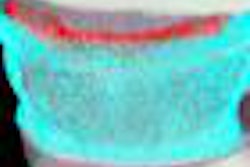Diagnostic imaging can play an important role when physicians are treating a pediatric patient for an injury suspected of being caused by abuse. And PET may be better than standard radiography for the evaluation, according to an article published in the April issue of Radiology.
A study conducted at Children's Hospital Boston determined that fluorine-18-labeled sodium fluoride (F-18 NaF) PET exams have greater sensitivity in the overall detection of fractures related to child abuse than baseline skeletal surveys. The procedure was found to be superior in detecting rib fractures, in particular (Radiology, April 2010, Vol. 255:1, pp. 173-181).
Children who present at Children's Hospital Boston with skeletal trauma caused by a sports-related injury or suspected child abuse receive an F-18 NaF PET examination in addition to a high-detail skeletal survey. An F-18 NaF PET exam can provide a substantial advantage for early diagnosis of rib fractures, according to lead author Dr. Laura Drubach, a staff physician in the division of nuclear medicine, and colleagues. This is important because acute rib fractures may not be visible on initial radiographs, and a patient may require delayed repeat radiographic imaging.
F-18 NaF is a positron-emitting bone agent with increased uptake seen in areas of osteoblastic activity. An exam may be performed 30 to 45 minutes after administration of the tracer, revealing details in the skeleton such as abnormalities of the vertebral spinous and transverse processes. Infants and toddlers must be sedated for this procedure.
The authors emphasized that use of an imaging procedure with high sensitivity is desirable in this clinical application, because the number of fractures and the extent of injury to a child are often crucial when determining that abuse has caused the injury, instead of an accident. For this reason, timely diagnosis identifying the types of fractures, the presence of fractures in locations not consistent with the reported injury, and patterns of the locations of multiple fractures are very important.
To compare the sensitivity of the two types of exams, the radiologists reviewed the files of all patients younger than 2 years treated at the hospital between September 2007 and January 2009 who had received a baseline skeletal survey and an F-18 NaF PET exam. Twenty-two patients were identified, 14 of whom also underwent a follow-up skeletal survey.
For the evaluation, two pediatric nuclear medicine physicians independently interpreted the PET exams. One pediatric radiologist interpreted the initial radiographic skeletal survey without having access to any of the other patients' files and images. A second pediatric radiologist interpreted the follow-up skeletal survey images in conjunction with the baseline survey images for the 14 patients who had two skeletal surveys. This served as the reference standard.
A total of 156 fractures were detected at baseline skeletal survey, and 200 fractures were detected from the PET exams. Forty-one of the 44 fractures detected by PET exams only were primarily located in the posterior ribs of the thorax, and one fracture each was identified in the clavicle, the acromion, and the scapula.
The sensitivity and specificity of the PET exams compared to the baseline high-detail skeletal survey were as follows:
|
|||||||||||||||||||||||||||||
It is important to adjust the contrast appropriately for optimal evaluation and detection of classic metaphyseal lesions, according to the authors. Although F-18 NaF PET exams had a sensitivity of 67% for detecting classic metaphyseal lesions, the authors noted that this sensitivity is too low for F-18 NaF PET to be used as the sole initial examination for detecting fractures in cases of suspected infant abuse.
However, they believe that PET scanning shows promise as the sole global skeletal assessment tool in children older than 1 year, and recommend that further studies be performed to evaluate this.
"The use of both techniques at baseline shows promise to increase the imaging yield during the critical early assessment of selected cases of suspected abuse," the authors concluded. This would potentially help improve clinical management and expedite formal intervention to protect vulnerable patients.
By Cynthia E. Keen
AuntMinnie.com staff writer
March 24, 2010
Related Reading
Bone fracture in children with rickets differ from child-abuse injuries, January 18, 2010
Occult abdominal trauma common in children with suspected physical abuse, November 25, 2009
Chest x-ray measures up to CT for pediatric blunt chest trauma, July 17, 2009
Copyright © 2010 AuntMinnie.com



















